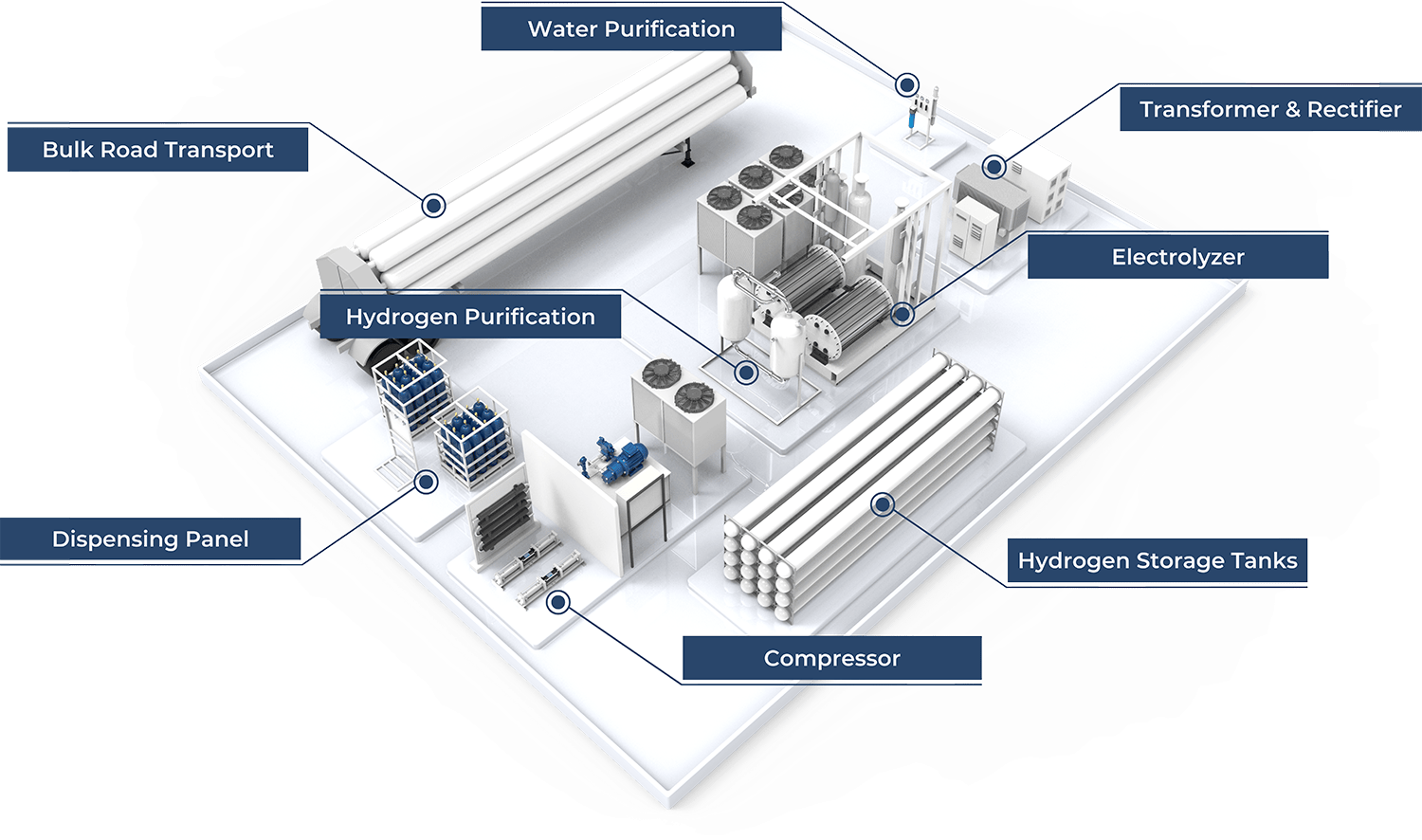Empowering Texas: The 5 Key Factors in Regional Green Hydrogen Production with a US-Based Approach
In the pursuit of sustainable energy solutions, Texas is at the forefront of a pivotal transition, eyeing regional green hydrogen production as a cornerstone of its clean energy future. Recent developments, such as Shell's closure of light-duty hydrogen refueling stations in California due to supply complications and external market factors, underscore the urgency for self-reliance in hydrogen production. A US-based approach ensures energy independence, and innovative technologies like our Scalable Hydrogen Energy Platform (SHEP offers scalable, modular solutions for local green hydrogen facilities, contributing to a resilient hydrogen infrastructure.
1. Energy Independence Through US-Based Supply and Manufacturing
Investing in regional green hydrogen production with a US-based supply and manufacturing approach ensures energy independence. By reducing dependence on external sources, Texas can fortify its energy security and insulate itself from global market fluctuations.
2. Scalability and Modularity
Technological solutions that offer scalability and modularity, like our SHEP, empower developers to create local green hydrogen production facilities. This adaptability allows for customization to meet specific regional needs, fostering a more efficient and responsive hydrogen infrastructure.
3. Cost-Effectiveness and Local Economic Growth
Local green hydrogen production not only provides a sustainable energy solution but also contributes to local economic growth. Establishing cost-effective facilities stimulates job creation, attracts investments, and bolsters economic prosperity within the state.
4. Versatility Across Hydrogen-Powered Applications
The versatility of hydrogen as a fuel source is a significant advantage. Green hydrogen caters to a wide range of hydrogen-powered applications, including fuel cell electric vehicles, hydrogen internal combustion engine vehicles, hydrogen-powered aircraft, and more. This flexibility positions Texas as a hub for innovation across diverse sectors, from transportation to aerospace.
5. Environmental Impact Mitigation
Local green hydrogen production significantly reduces the environmental impact associated with traditional hydrogen production methods. By embracing this technology, Texas can play a leading role in combating climate change and preserving its natural beauty for future generations.
Recent Developments - Shell's Closure of Hydrogen Refueling Stations in California:
The recent announcement of Shell gas company closing its light-duty hydrogen refueling stations in California serves as a stark reminder of the vulnerabilities in centralized hydrogen supply chains. Texas can learn from this example, emphasizing the need for a decentralized, resilient approach. Localized green hydrogen production, coupled with a US-based strategy and technologies like SHEP, minimizes the risks associated with external market factors.
Conclusion
As Texas and other states across the country chart its course towards a cleaner and more sustainable energy future, regional green hydrogen production with a US-based supply and manufacturing approach, coupled with innovative technologies like SHEP, emerges as a strategic and forward-thinking solution. By prioritizing energy independence, fostering economic growth, and embracing versatile technologies, Texas can lead the nation in the transition to a hydrogen-powered future.

